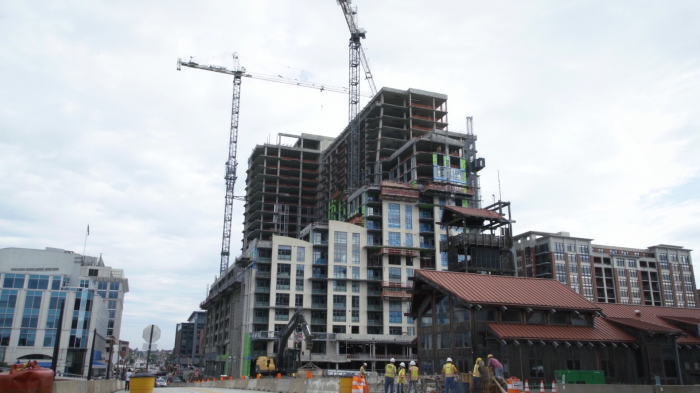Charm City’s Residential and Office Real Estate Trends

Collaborative and open workspaces, flexible work arrangements, investment in work/life/play communities. These are concepts you would have never heard mentioned just 20 years ago in any office environment. Now, everywhere you turn, offices are breaking down the cubicle barriers, repurposing industrial warehouses to produce open, team-building work environments, developing technologies that allow you to work where you want when you want, and offering a full array of walkable amenities and attractions. It’s attractive, it’s enticing, it’s good for employee morale, and often, the bottom line.
But will this trend continue? Will Millennials and future leaders keep the momentum going?
Two years ago, expansion in Baltimore City and the surrounding region had just begun to explode with projects such as Anthem House, 414 Light Street, McHenry Row, the Maple Lawn Communities, and the repurposing of old buildings in the heart of downtown from commercial properties to luxury condos with amenities such as gyms and pools to attract a growing and changing workforce.
Today, construction cranes scattered across Baltimore City’s skyline means an increase in building projects are being planned, started, and completed within the city limits. Projects such as 225 N. Calvert Street, Baltimore Crossroads, work/live/play opportunities in Middle River, M&T headquarters at 1 Light Street, Wills Wharf in Harbor Point, Alta Brewers Hill and Canton Crossing Two in Canton means the influx is strong.
Is Baltimore too bullish on filling these luxury apartments, condos and new commercial space? Do we have enough high sustainable income to fill these? Are enough transplants moving here to fill the leasing and investment needs?
Data from the Economic Alliance of Greater Baltimore tells us that the median household income change in the last two years has increased by 11.68%, with annual wages increasing by 4.5%. These are promising numbers as unemployment in the city continues to decrease. Transplants do seem to keep migrating and planting their roots to the area; but according to the Bureau of Labor Statistics, employment has only increased 1.83% in Baltimore City, and the number of people working AND living in the city has only increased 2.72% since 2016. According to EAGB, vacancy rates as a whole in the city have decreased marginally from 19.1% to 18.4% in the last two years; which is positive with all the new supply flooding the market.
Looking into the future, Baltimore must continue to market its most precious assets. Education levels continue to rise among city residents who possess a bachelor’s degree or higher. Baltimore City is still a leading destination for real estate investment commercially, and residentially for individuals and families laying down roots for the future. Baltimore has world-class health and hospital institutions, a thriving technology startup community, and is nestled perfectly on the 95 corridor between Washington DC, Fort Meade, and Aberdeen Proving Grounds and Philadelphia.
What’s the next step and how do we keep moving forward? The business community in particular needs to continue to be the city’s biggest supporter and loudspeaker for all the great things happening in the city to amplify and push the city footprint forward to attract new businesses and new residents. By showing the existing assets and great potential Baltimore has, we can grow the local economy and welcome new neighbors to the city we call home.
As we approach 80 years, Ellin & Tucker remains firmly in the room, driven by a legacy of excellence in teamwork, leadership, and service. Our strength has always been in our people, and together, we’ll continue to stand with the next generation of difference-makers and leaders, ready to shape the future.